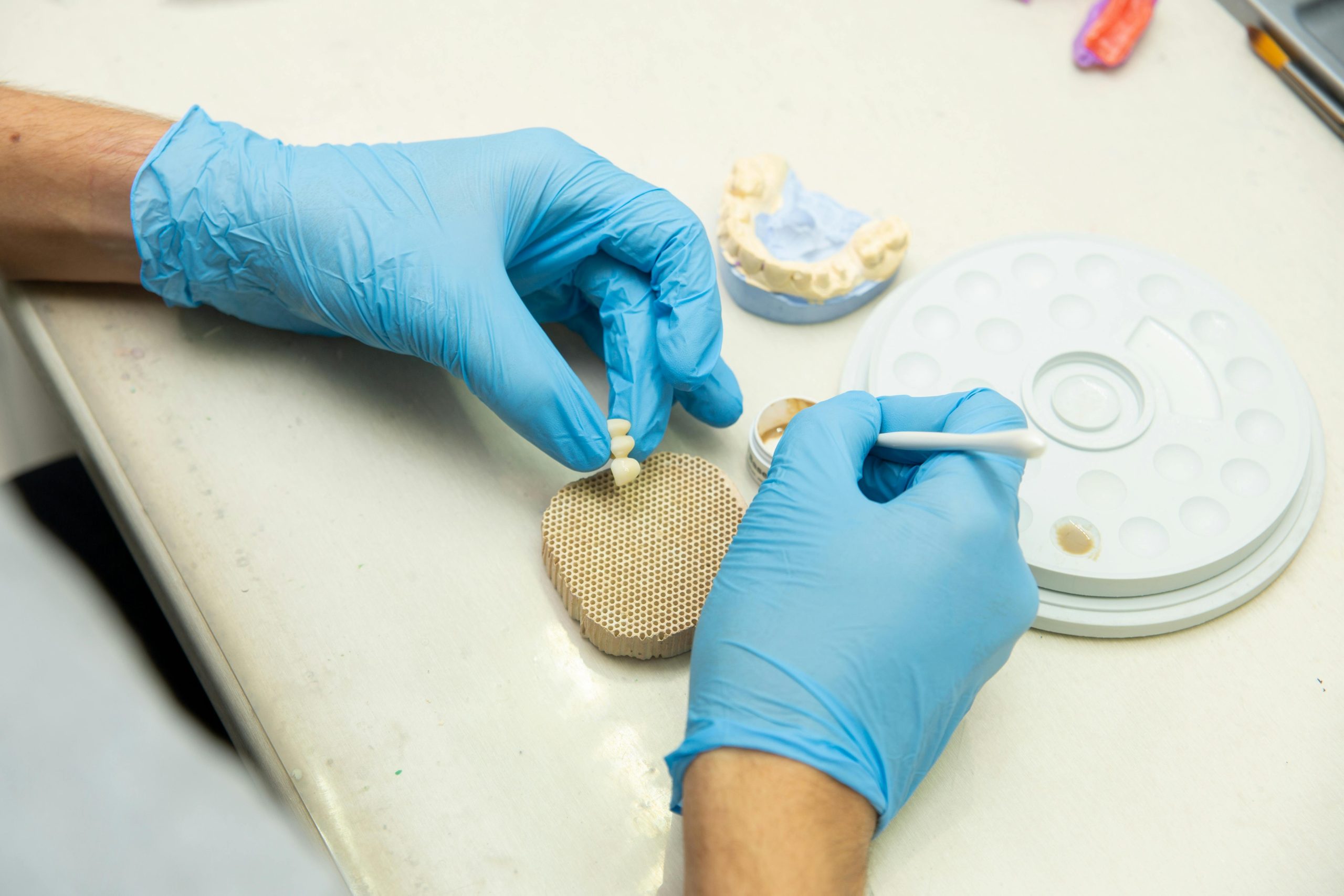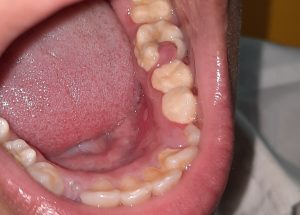Dental restorations like crowns and bridges play a crucial role in maintaining oral health and aesthetics. This article delves deep into the world of crown and bridge dental work, explaining every aspect in a patient-friendly manner. By the end, you’ll have a thorough understanding of what these procedures entail, their benefits, and how they can enhance your dental health.
Table of Contents
What Are Crown and Bridge?
Crowns and bridges are dental restorations used to replace missing or damaged teeth. Both serve to restore function and appearance, but they do so in different ways.
Definition of Dental Crowns
A dental crown, often referred to as a cap, covers a damaged tooth entirely. It is shaped like a natural tooth and is placed over a prepared tooth to restore its size, shape, strength, and appearance. Crowns are commonly made from materials like porcelain, ceramic, metal, or a combination.
Definition of Dental Bridges
A dental bridge, as the name suggests, bridges the gap created by one or more missing teeth. A bridge is made up of two or more crowns for the teeth on either side of the gap (abutment teeth) and a false tooth/teeth in between (pontic). These can be made from materials similar to crowns, including porcelain, ceramic, or metal.
Why You Might Need a Crown or Bridge
Understanding why you might need a crown or bridge can help you appreciate their importance in dental care. Here are common scenarios where your dentist might recommend these restorations:
Reasons for Needing a Crown
- Severe Tooth Decay: When a tooth is extensively decayed and a filling won’t suffice, a crown can protect and strengthen the remaining structure.
- Broken or Chipped Teeth: Crowns can restore the shape and function of broken or severely chipped teeth.
- After a Root Canal: Teeth that have undergone root canal treatment are more brittle and prone to fracture, making crowns necessary to protect them.
- Large Fillings: When a large filling weakens a tooth, a crown can hold the tooth together and provide stability.
- Cosmetic Reasons: Crowns can also be used to improve the appearance of misshapen or discolored teeth.
Reasons for Needing a Bridge
- Missing Teeth: Bridges are specifically designed to replace one or more missing teeth, filling the gap and preventing remaining teeth from shifting.
- Restoring Function: Missing teeth can make chewing and speaking difficult. Bridges help restore normal function.
- Maintaining Facial Shape: Gaps from missing teeth can cause the face to sag. Bridges help maintain the natural shape of your face.
- Preventing Tooth Movement: When a tooth is lost, the neighboring teeth can shift into the empty space, leading to bite problems and further tooth loss.
The Crown and Bridge Procedure: Step-by-Step
Understanding the procedure can ease any anxiety you might have about getting a crown or bridge. Here’s a detailed overview of what to expect.
The Crown Procedure
1. Initial Consultation and Examination:

Your dentist will examine your teeth, take X-rays, and discuss your options. If a crown is necessary, they will explain the procedure and materials available.
2. Tooth Preparation:
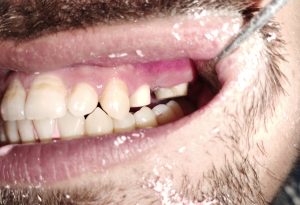
The dentist will numb the area and reshape the tooth to make room for the crown. This involves removing a portion of the tooth structure.
3. Impressions:
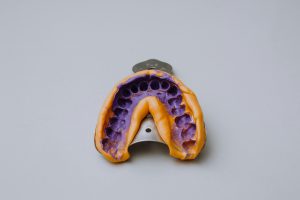
An impression of the prepared tooth and surrounding teeth is taken. This impression is sent to a dental laboratory where the crown will be custom-made.
4. Temporary Crown:

A temporary crown is placed over the prepared tooth to protect it while the permanent crown is being made.
5. Fitting the Permanent Crown:
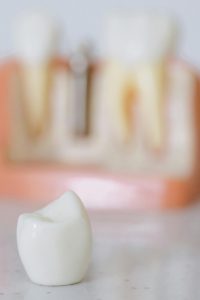
Once the permanent crown is ready, you will return to the dentist. The temporary crown is removed, and the new crown is checked for fit and color. If everything is satisfactory, the permanent crown is cemented into place.
The Bridge Procedure
The procedure of bridge insertion is essentially the same as that of crown insertion. The only difference is that in bridge insertion, the bridge is designed keeping in mind the Ante’s Law.
1. Initial Consultation and Examination:
Your dentist will evaluate your teeth, take X-rays, and determine if a bridge is suitable for you.
2. Preparation of Abutment Teeth:
The teeth adjacent to the gap (abutment teeth) are prepared. This involves reshaping these teeth to fit the crowns that will hold the bridge.
3. Impressions:
Impressions of the prepared teeth and the gap are taken. These impressions are sent to a dental lab to create the custom bridge.
4. Temporary Bridge:
A temporary bridge is placed to protect the prepared teeth and the gap until the permanent bridge is ready.
5. Fitting the Permanent Bridge:
The temporary bridge is removed, and the permanent bridge is fitted. Adjustments are made to ensure a comfortable fit, and then the bridge is cemented into place.
Types of Crown and Bridge Materials
Choosing the right material for your crown or bridge is essential for both functionality and aesthetics. Here’s a breakdown of the common materials used:
Materials for Crowns
- Porcelain-Fused-to-Metal (PFM): These crowns are made of a metal base with porcelain fused to the outside. They offer a balance of strength and aesthetics.
- All-Ceramic or All-Porcelain: These crowns provide the best natural color match and are an excellent choice for front teeth.
- Gold Alloys: Gold crowns are durable and resistant to wear. They are often used for molars where strength is critical.
- Base Metal Alloys: These crowns are very strong and resistant to corrosion. They require less removal of the natural tooth structure.
Materials for Bridges
- Porcelain-Fused-to-Metal (PFM): Commonly used for bridges due to their strength and natural appearance.
- All-Ceramic or All-Porcelain: Ideal for bridges that are visible when you smile, providing a natural look.
- Gold Alloys: These are durable and suitable for bridges in the back of the mouth.
- Base Metal Alloys: Known for their strength and longevity, making them suitable for any location in the mouth.
Benefits of Crown and Bridge
Crowns and bridges offer numerous benefits that can significantly improve your oral health and quality of life. Here are some key advantages:
Benefits of Crowns
- Protection: Crowns protect weak or damaged teeth from further decay or fracture.
- Restoration: They restore the normal shape, size, and function of a tooth.
- Durability: Crowns are long-lasting and can withstand the forces of biting and chewing.
- Aesthetics: Modern crowns can be made to match the color and appearance of your natural teeth, enhancing your smile.
Benefits of Bridges
- Improved Function: Bridges restore the ability to chew and speak properly.
- Preventing Movement: They prevent remaining teeth from shifting out of position.
- Maintaining Facial Structure: Bridges help maintain the shape of your face and prevent sagging.
- Aesthetic Appeal: Bridges look natural and can blend seamlessly with your surrounding teeth.
Maintaining Your Crown and Bridge
Proper care is essential to ensure the longevity of your crown and bridge. Here’s how you can maintain them:
1. Daily Oral Hygiene
- Brushing: Brush your teeth twice a day with fluoride toothpaste. Pay special attention to the area around the crown or bridge.
- Flossing: Floss daily to remove plaque and food particles from between your teeth and under the bridge. Use a floss threader if necessary.
- Mouthwash: Use an antibacterial mouthwash to help reduce plaque and bacteria in your mouth.
2. Regular Dental Visits
- Check-ups: Visit your dentist regularly for check-ups and professional cleanings. They can monitor the condition of your crown and bridge and address any issues early.
- Professional Cleanings: Regular professional cleanings help maintain the health of your gums and surrounding teeth.
3. Special Considerations
- Avoid Hard Foods: Avoid chewing on hard objects like ice, hard candy, or pens, which can damage your crown or bridge.
- Wear a Night Guard: If you grind your teeth at night, wearing a night guard can protect your crown and bridge from excessive wear.
Crown and Bridge: Before vs. After


To truly appreciate the transformative power of crown and bridge treatments, let’s look at the differences they can make.
Before the Treatment
- Appearance: Missing or damaged teeth can make you self-conscious about your smile.
- Function: You might struggle with chewing and speaking properly.
- Oral Health: Gaps from missing teeth can lead to shifting of remaining teeth, bite problems, and further tooth loss.
After the Treatment
- Appearance: Your smile looks natural and complete, boosting your confidence.
- Function: Chewing and speaking become easier and more comfortable.
- Oral Health: The gaps are filled, preventing the movement of remaining teeth and maintaining your bite alignment.
Potential Risks and Complications
While crowns and bridges are generally safe and effective, there are potential risks and complications you should be aware of:
1. Sensitivity
- To Temperature: Some patients experience increased sensitivity to hot and cold after getting a crown or bridge. This usually subsides over time.
- To Biting: Sensitivity to biting pressure can occur, especially if the bite needs adjustment.
2. Discomfort or Pain
- Initial Discomfort: It’s normal to feel some discomfort or pain after the procedure. This should resolve as your mouth adjusts.
- Prolonged Pain: If pain persists, it might indicate an issue with the fit or placement of the crown or bridge. Contact your dentist for evaluation.
3. Infection
- Root Canal Issues: If the tooth beneath a crown was not fully treated, an infection can develop, requiring further treatment.
- Gum Disease: Poor oral hygiene can lead to gum disease around the crown or bridge, potentially compromising its stability.
4. Damage or Loosening
- Chipping or Cracking: Crowns and bridges can chip or crack, especially if made from porcelain. Avoid biting on hard objects to prevent damage.
- Loosening: Crowns or bridges can become loose due to wear and tear or if the cement weakens. Regular dental check-ups can help catch and address this early.
Frequently Asked Questions About Crown and Bridge
To help you better understand crowns and bridges, here are answers to some frequently asked questions:
How Long Do Crowns and Bridges Last?
With proper care, crowns and bridges can last many years. On average, they last between 5 to 15 years, but many can last even longer with excellent oral hygiene and regular dental check-ups.
Is the Procedure Painful?
The procedure for getting a crown or bridge is typically not painful. Your dentist will numb the area with local anesthesia to ensure your comfort. You might experience some discomfort after the procedure, but this usually subsides quickly.
Can I Eat Normally After Getting a Crown or Bridge?
Yes, you can eat normally after the initial adjustment period. However, avoid very hard or sticky foods that might damage the crown or bridge. Follow your dentist’s instructions for specific dietary recommendations.
How Do I Clean Under a Bridge?
Cleaning under a bridge is important to prevent plaque build-up and gum disease. Use a floss threader or special dental floss designed for bridges to clean underneath the pontic (the false tooth).
Will My Crown or Bridge Look Natural?
Modern dental materials and techniques allow for crowns and bridges that closely resemble your natural teeth. Your dentist will match the color and shape to blend seamlessly with your existing teeth.
What Should I Do If My Crown or Bridge Feels Loose?
If your crown or bridge feels loose, contact your dentist immediately. Do not try to fix it yourself. Your dentist will evaluate the issue and take the necessary steps to secure it.
Conclusion
Crowns and bridges are invaluable dental restorations that can significantly improve your oral health, functionality, and aesthetics. By understanding the procedures, benefits, and maintenance involved, you can make informed decisions about your dental care. Remember, regular dental visits and proper oral hygiene are key to ensuring the longevity of your crown and bridge.
Investing in your dental health by considering crowns and bridges can lead to a healthier, more confident smile. If you have any further questions or concerns, don’t hesitate to reach out to your dentist. They are there to help you achieve and maintain optimal dental health.

